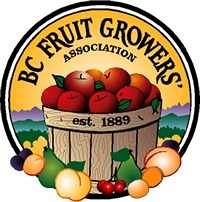Spotted Wing Drosophila
General Description
Spotted wing drosophila (SWD) is an imported vinegar fly pest that was first found in California in 2008, and first detected in Kelowna in September, 2009. It is a serious pest of fruit because unlike other vinegar flies which attack rotting fruit, female SWD attack healthy undamaged ripening fruit with its saw-like ovipositor (egg laying device). Larvae develop inside fruit and fruit becomes soft and unmarketable.
Hosts
Cherries and other soft fruits, berries (strawberry, raspberries, blueberries, blackberries). Non-crop hosts include blue elderberry, black currant, Oregon grape and mulberry.
Damage
Female spotted wing drosophila lays eggs under the skin of ripening fruit. This creates small depressions (stings) on the surface of fruit (Fig. 1). Other vinegar flies may lay eggs in damaged fruit. Larvae feed inside fruit, cause softening in the area of feeding, sunken areas on fruit sometimes exude fluid. Damage can provide entry site for infection by secondary fungi and bacteria. Other drosophila species will lay eggs in damaged fruit therefore larvae have to be reared out to adults to confirm SWD.
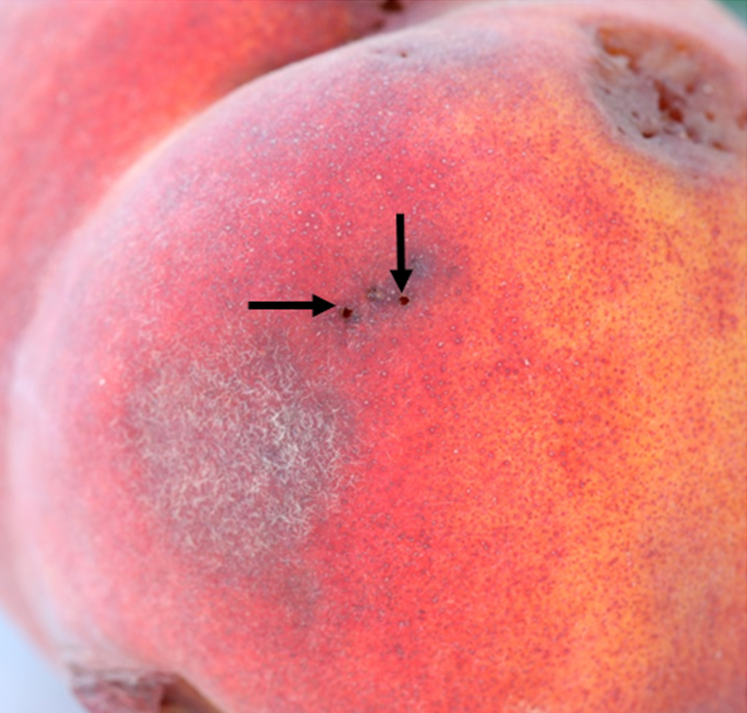 |
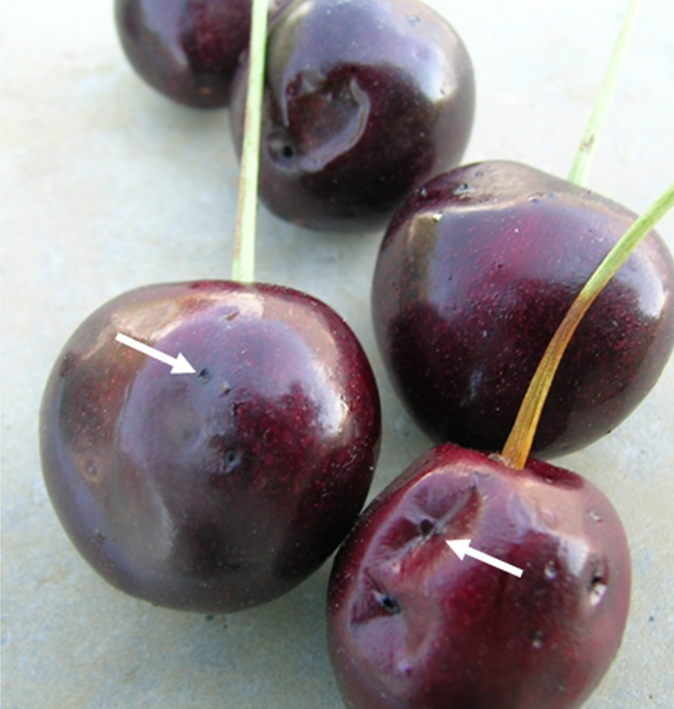 |
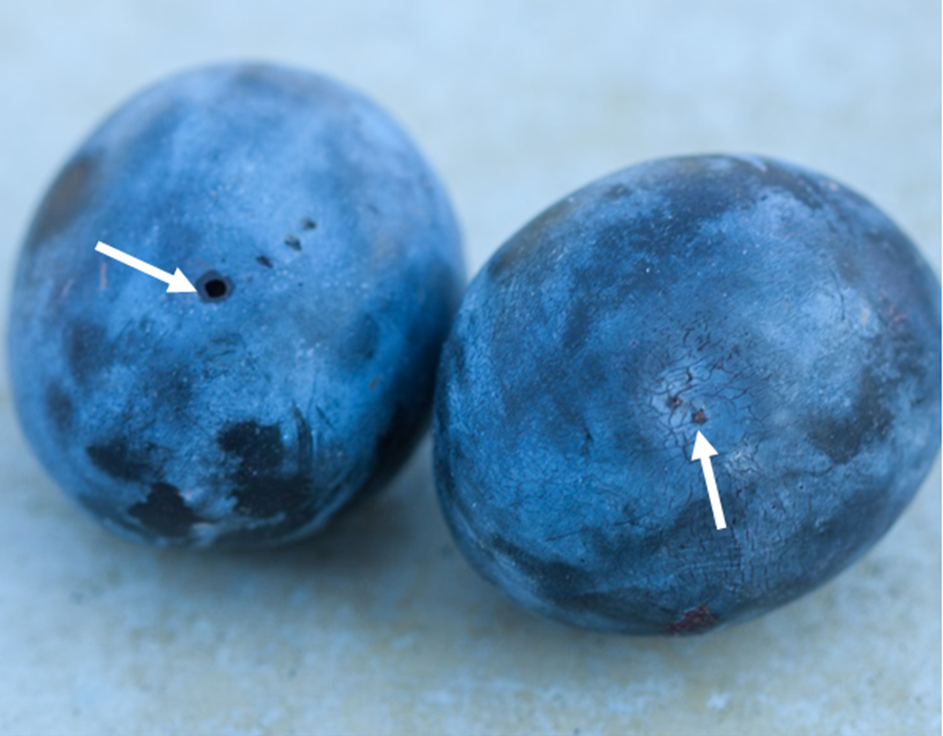 |
|
| Figure 1. Spotted wing drosophila damage to peach and cherry, note egg laying scars (arrows). Some infested fruit will NOT have the damage signs shown. Photo credit: B.C. Ministry of Agriculture | |
Identification
Larva - White to cream coloured small maggot, up to 4 mm (Fig. 2)
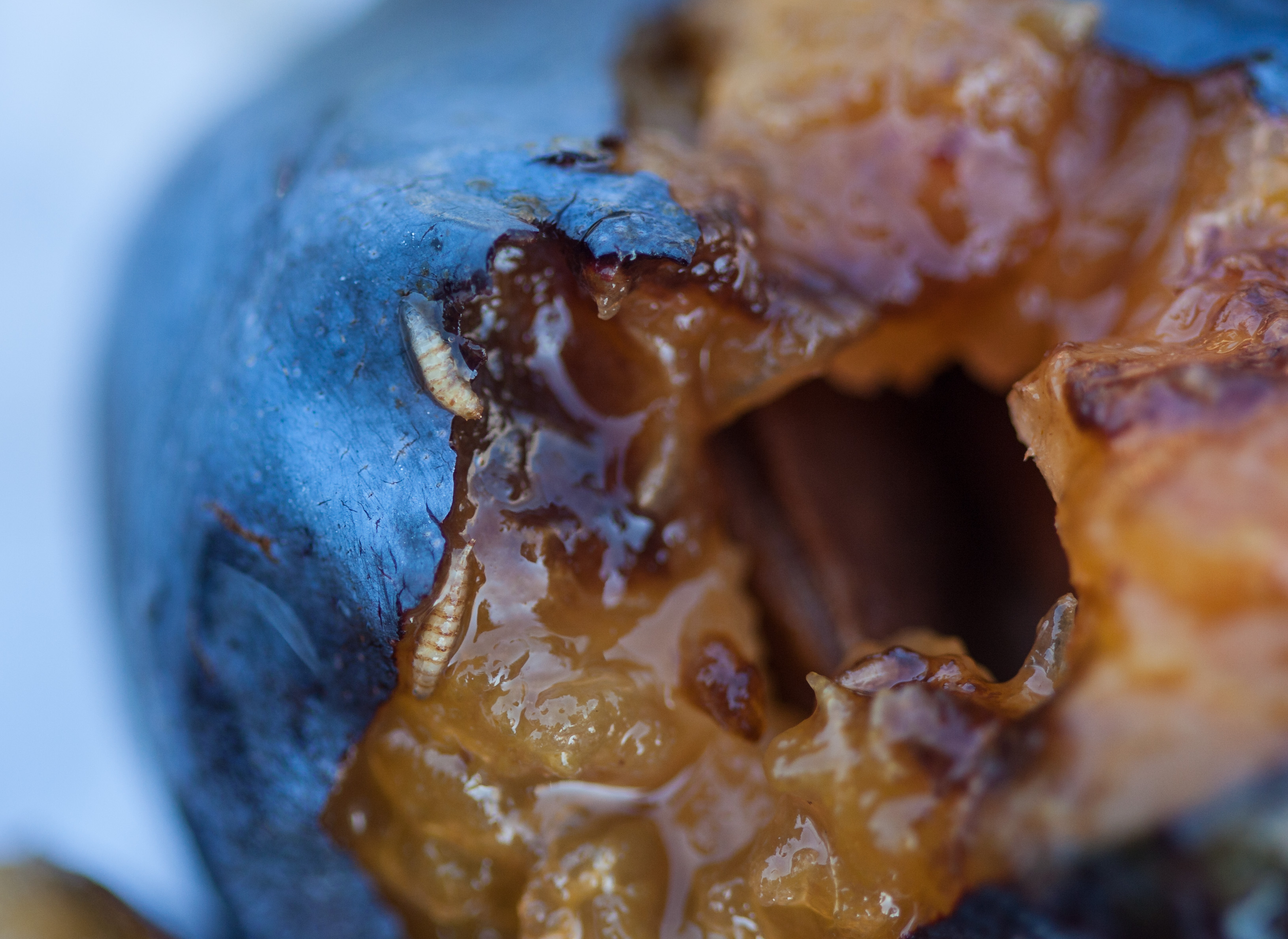 |
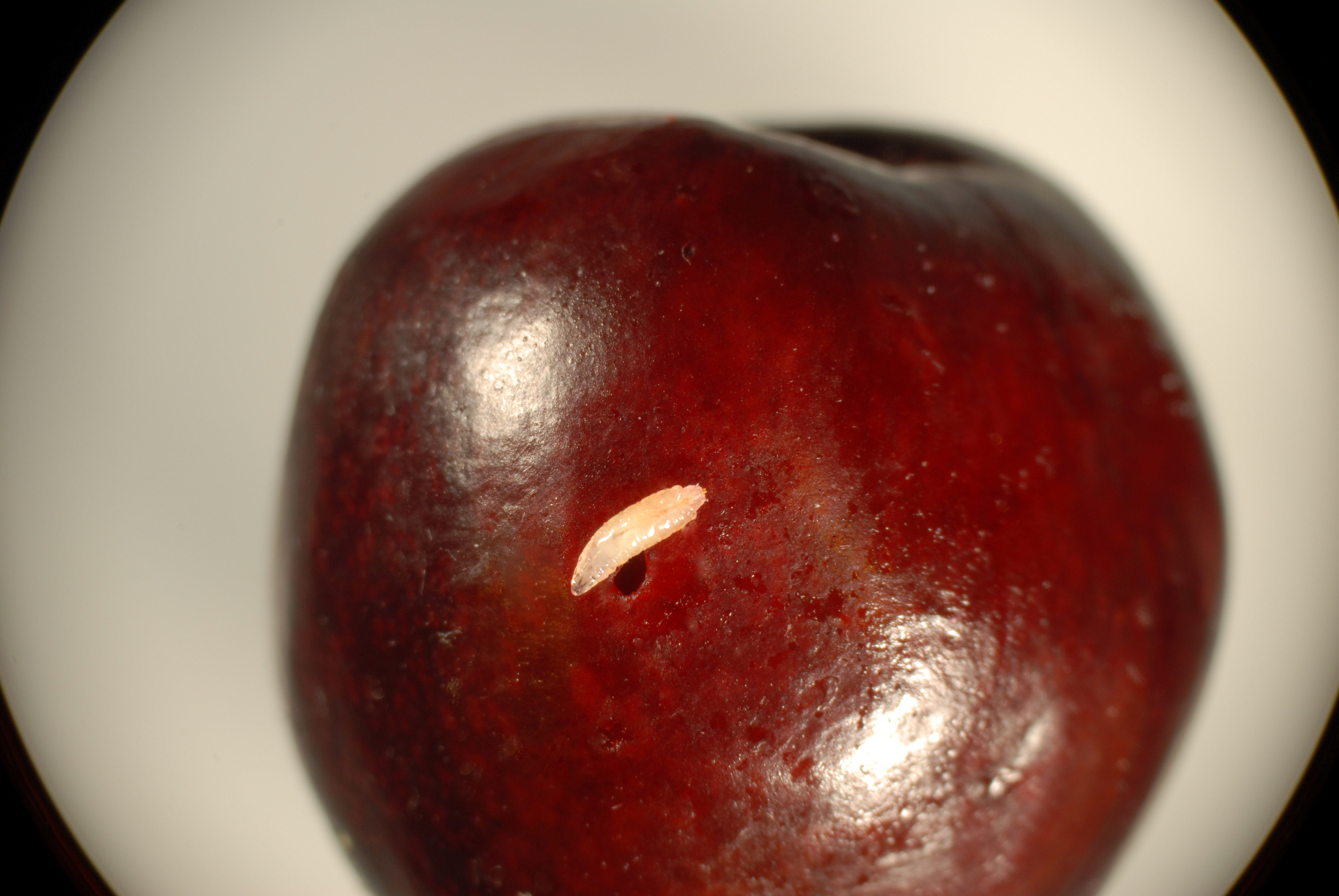 |
| Figure 2. Left, Spotted wing drosophila larvae in plum; Right, SWD larva on cherry. Photo credit: B.C. Ministry of Agriculture. | |
Pupae - Brown coloured 3 mm long with two stalks on one end with finger-like projections; forms inside or outside infested fruit (Fig. 3).
| Figure 3. Left, Spotted wing drosophila pupa extending from infested fruit; SWD pupae outside infested fruit. Photo credit: B. C. Ministry of Agriculture. | |
Adult - Resemble vinegar flies, body length of 2-3 mm, red eyes, pale brown body, males have a black spot towards the tip of each wing. Females do not have the black spots on their wings but have a saw-like ovipositor (egg-laying structure at end of body) (Fig. 4).
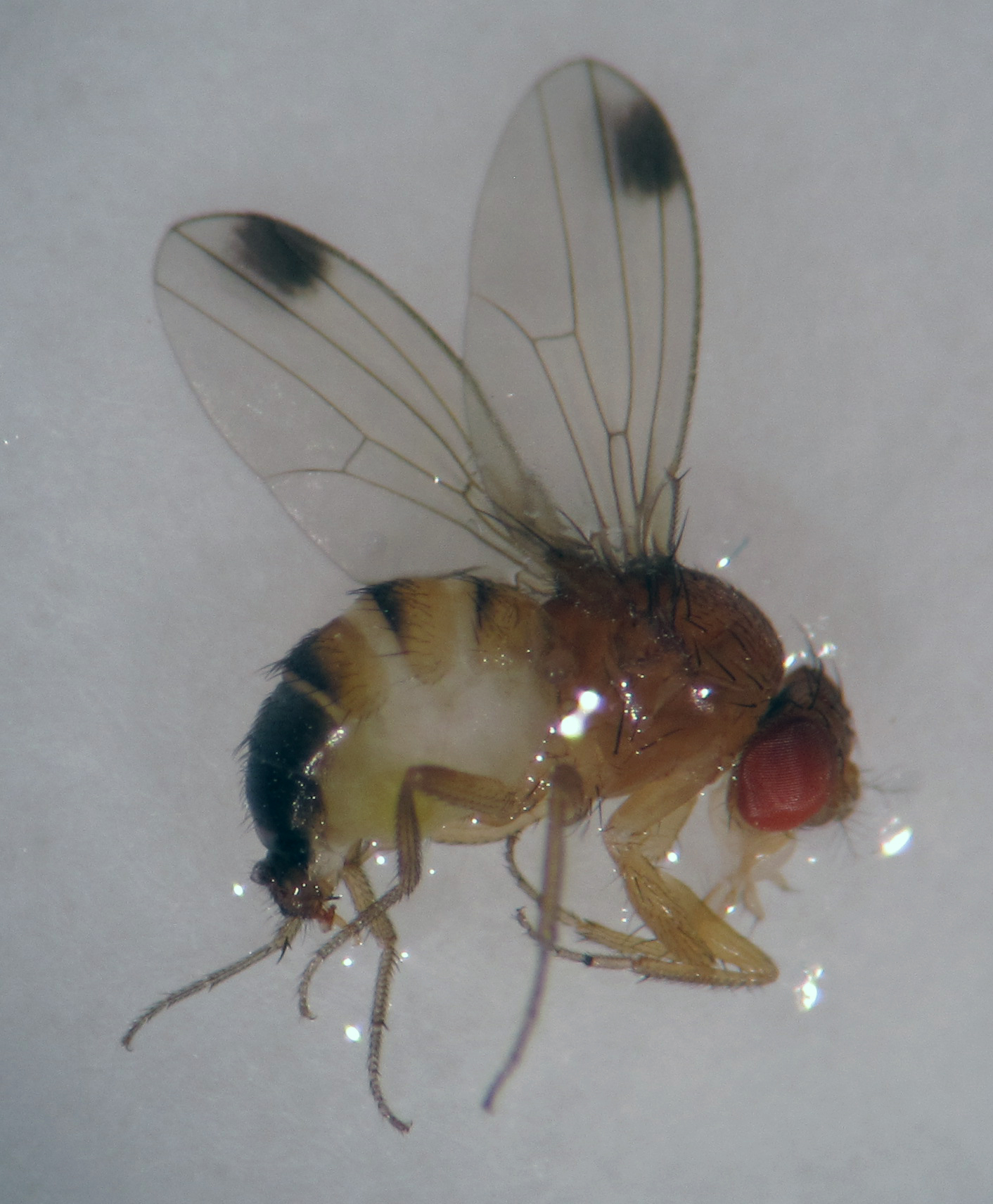 |
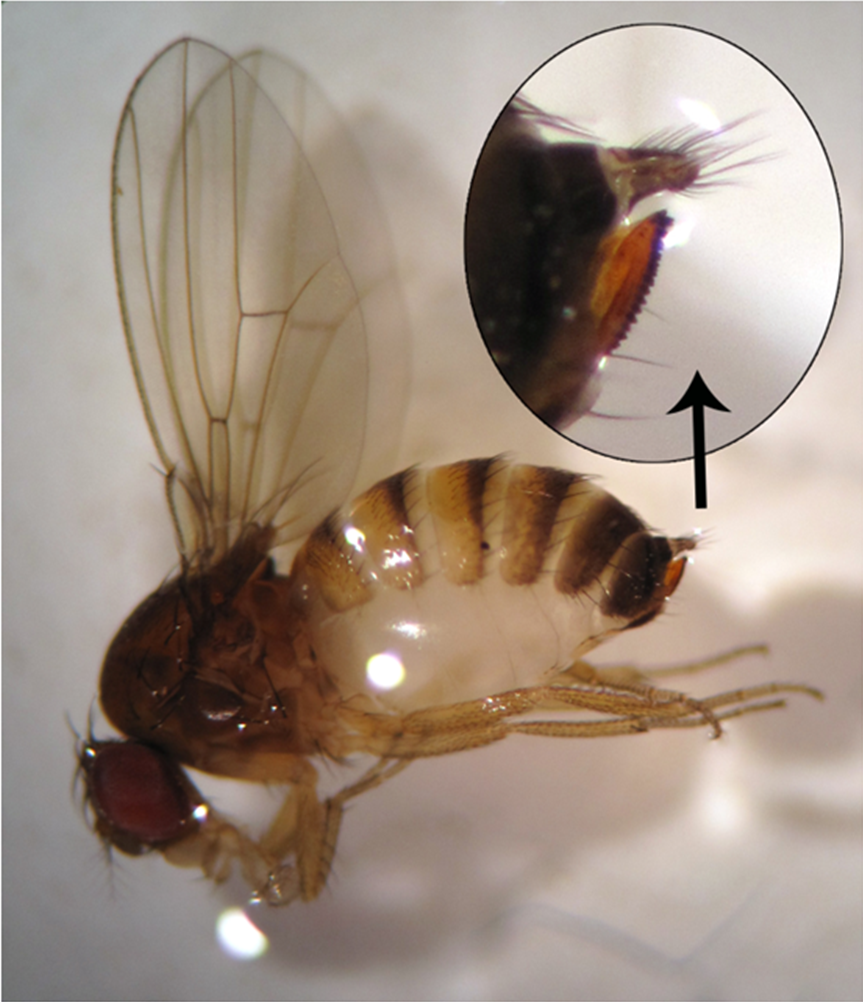 |
| Figure 4. Left, Spotted wing drosophila adult male with wing spots; Right, SWD adult female. Inset shows ovipositor. Photo credit: Sheila Fitzpatrick, AAFC Canada. | |
Life History
Spotted wing drosophila overwinter as adult flies and emerge in the spring. In interior B.C., adults are present from April - November. Females lay eggs in ripening fruit. Eggs hatch in 12-72 hours, larvae feed inside fruit and mature in 3-13 days. Pupae form inside or outside fruit or in the soil. Adults feed on dropped and decaying fruit. Adults are most active at temperatures between 20 and 30°C. Above 30°C there is decreased activity and longevity, egg laying is reduced and males become sterile. It is estimated that spotted wing drosophila can produce 3-9 generations/year in Canada. Cherries are susceptible to attack from straw/pink colour.
Monitoring
Monitor spotted wing drosophila from May with homemade traps or commercial spotted wing drosophila traps (Fig. 5). Traps can be made from deli cups with 4-5 holes drilled (use a 3/16 inch drill) on one side of the container to allow flies to enter. Holes shouldn’t be too big or other large insects can get in (Fig. 5). Add about 1½ inch (4cm) pure apple cider vinegar to the trap and a drop of unscented dish soap to help drown flies. Hang trap near fruit level in a shady area. Replace apple cider vinegar once a week and look for male flies (black spots on wings) in apple cider solution. Do not dump the old apple cider solution on the ground as this will attract more flies into the orchard. Use a magnifying glass or hand lens to help identify male flies. A microscope is needed for the identification of female flies. Identification keys are available at the Ministry of Agriculture website: http://www.agf.gov.bc.ca/cropprot/swd_identification.pdf. Contact BC Ministry of Agriculture staff or the Packing House for assistance with fly identification. Note: Traps indicate the presence of spotted wing drosophila. They are NOT a reliable measure of population pressure.
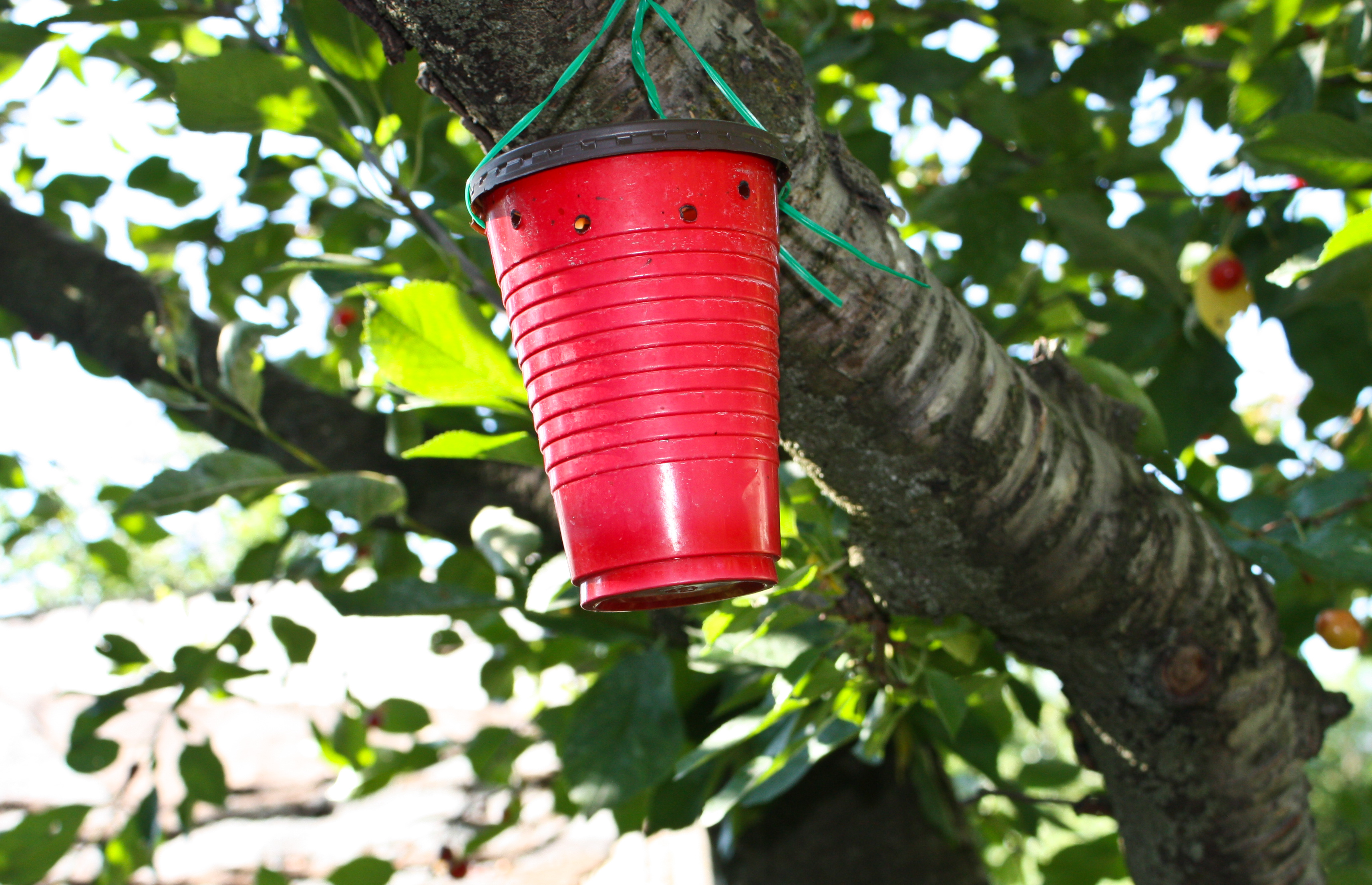 |
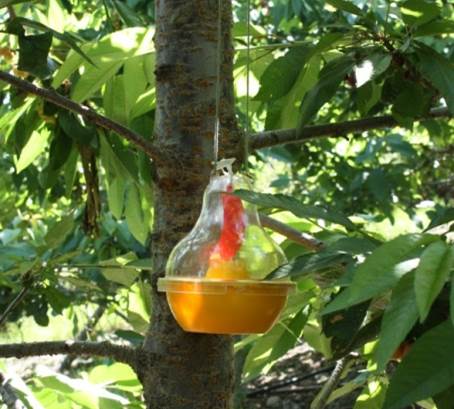 |
|
Figure 5. Left, Deli cup trap with apple cider vinegar bait; Right, Trappit globe trap with Trece bait. Photo credit: B.C. Ministry of Agriculture. |
|
Management
Biological Control
There is ongoing research on predatory insects and parasitic wasps for spotted wing drosophila control.
Cultural Control
Field sanitation is critical to control of spotted wing drosophila. Remove and dispose of infested ripe, overripe and rotten fruit which serve as source of food for larvae to complete development. Seal cull fruit in plastic bags or cover cull piles with plastic and allow to heat in the sun for a week or place culls in bins or half bins lined with bin liners and seal for at least 5 days before disposal or send culls to the landfill for disposal. Mowing the orchard floor immediately after harvest to destroy fruit on the ground may help.
Chemical Control
Apply a recommended control product when the cherries are turning straw coloured. See table below for a list of recommended products. Keep cherries protected to harvest by rotating products to minimize risk of pesticide resistance development. Do not exceed the maximum number of applications per year for all labeled uses of the products. These products will only control the adults, not maggots. Check MRL requirements for fruit exports. Tighten up spray intervals close to harvest. Note: Assail and GF-120 used for cherry fruit fly control will NOT control spotted wing drosophila. It is important that all growers in an infested area participate in controlling spotted wing drosophila because a single unmanaged orchard will serve as a source of infestation for nearby susceptible orchards. Apply post-harvest insecticide sprays to cherries for cherry fruit fly control immediately after harvest. Apply Assail in Lapins, Sweetheart, Sonata and Santina. Dimethoate works well for other varieties and will also control spotted wing drosophila.
Registered products for spotted wing drosophila control on stone fruit in British Columbia
Check MRL requirements for fruit exports. Tighten up spray intervals close to harvest. Rotate Group 5 insecticides with other groups for resistance management.
|
Trade Name (active ingredient) |
Group |
Registered Crop |
Rate
|
Maximum Number of Sprays |
Pre-harvest Interval (days) |
Worker Re-entry |
Label Spray Interval (days) |
Other Pests Controlled |
Precautions and Notes |
|
Delegate (spinetoram) |
5 |
Stone fruit |
420 g/ha (170 g/acre) |
3 |
5 (cherry) 3 (prune, plum, apricot) 1 (peach, nectarine) |
12h |
7 |
Leafrollers Cherry fruit fly |
Label spray timings for 3 applications on cherries are 30, 12, and 5 days before harvest. |
|
Entrust (spinosad) |
5 |
Stone fruit
|
364 mL/ha (147 mL/acre)
|
3
|
3 (cherry) |
dry |
see notes |
Leafrollers Cherry fruit fly, Peach twig borer |
Label spray timings for 3 applications of spinosads on cherries are 28, 10, and 3 days before harvest. Rotate Group 5 insecticides with other groups for resistance management. Entrust is allowed in organic production. |
|
1 (peach, nectarine) |
dry |
7 - 10 |
|||||||
|
3 (plum, prune, apricot) |
dry |
7 -10 |
|||||||
|
Success (spinosad) |
5 |
Stone fruit
|
182 mL/ha (74 mL/acre) |
3 |
3(cherry) |
dry |
see notes |
Leafrollers Peach twig borer |
|
|
1 (peach, nectarine) |
dry |
7 - 10 |
|||||||
|
3 (plum, prune, apricot) |
dry |
7 - 10 |
|||||||
|
Exirel (cyantraniliprole) |
28 |
Stone fruit |
1000 - 1500 mL/ha (405 - 607mL/acre) |
4 |
3 |
12 h |
7 |
Aphids Leafrollers Cherry fruit fly |
Do not tank mix with Flint, Pristine, Cabrio, Copper or Captan fungicides. |
|
1Malathion 85 E (malathion) |
1B |
Stone fruit |
610-855 mL/1000 L water / ha (247 - 346 mL/405 L water/acre) |
2 |
3 |
12 h |
7 - 10 |
Aphids |
May be effective for 5 days. May cause leaf drop or fruit finish problems on cherries, particularly when hot, or in low water volumes. Works better at temperatures above 20°C. |
|
Grape |
880 mL/ 1000 L water / ha (356 mL/405 L water/acre) |
1 |
3 |
12 h - 3 days (see label) |
|
|
|||
|
1Mako Insecticide (cypermethrin) Formerly known as Ripcord |
3 |
Stone fruit |
150 mL/ha (61 mL/acre) |
1 |
2 |
12 h
|
|
|
Suppression of SWD. Short residual (3-5 days) when temperatures are above 25⁰C. May cause mite flare-ups. |
|
Grape |
150 mL/ha (61 mL/acre) |
1 |
2 (mechanical harvest) 6 (hand harvest) |
12 h -14 days (see label) |
|
|
|||
|
Imidan 70 WP (phosmet) |
1B |
Stone fruit (except sweet cherries) |
2.68 kg/ha (1.08 kg/ac) |
4 (sour cherry, peach) 3 (plum) |
7 (sour cherry) 14 (peach, plum)
|
3 (sour cherry) 7 (peach, plum) |
|
Peach twig borer, Cherry fruit fly |
Use a spray interval of 7-10 days. Do NOT use on sweet cherries. |
|
|
Grape |
2.2 kg/ha (0.9 kg/ac) |
3 |
14 |
14 |
|
|
Use a spray interval of 7-10 days. |
1Emergency registrations June 2018
The product below is not registered for spotted wing drosophila control in Canada, but is registered for other insects.
|
Trade Name (active ingredient) |
Group |
Registered Crop |
Maximum Number of Sprays |
Pre-harvest Interval (days) |
Worker Re-entry |
Pest(s) Controlled |
Precautions and Notes |
|---|---|---|---|---|---|---|---|
|
Cygon 480 EC / Lagon 480 E (dimethoate ) |
1B |
Cherry |
1 |
21 45 (export cherries)
|
24 h* |
Cherry fruit fly Aphids |
Effective on SWD adults. Some systemic activity against SWD eggs and larvae. Phytotoxic to some cherry varieties, particularly Lapins and varieties with Lapins parentage. |
Note: Admire, Assail and GF-120 registered for other pests will NOT control spotted wing drosophila. June 2018
Susanna Acheampong
BC Ministry of Agriculture, Kelowna
250 861 7681
